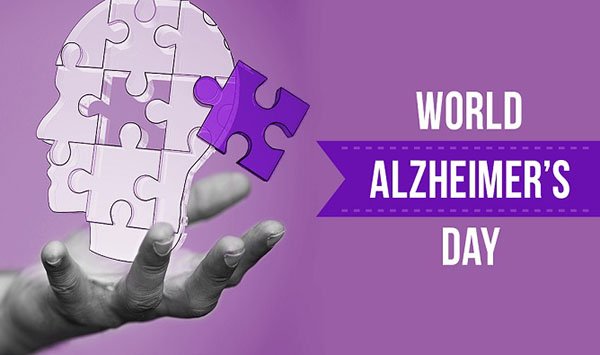World Alzheimer’s Day plays a pivotal role in highlighting the global impact of Alzheimer’s disease and other forms of dementia. Alzheimer’s, while being the most prevalent, is only one type of dementia, and as the global population ages, the number of people affected is expected to increase exponentially. The day’s primary objective is not just to inform the public about the clinical aspects of the disease but also to humanize the experiences of those living with it, and their caregivers. This global observance seeks to challenge the common misconceptions and stigmas associated with Alzheimer’s. Many mistakenly view it as a natural part of aging or just forgetfulness, but it’s a progressive neurological disease that affects memory, thinking, and behavior. Beyond awareness, World Alzheimer’s Day is also a call to action for more research, improved care, and enhanced support systems for patients and their families. By uniting on this day, organizations and individuals hope to create a world where dementia doesn’t dictate limitations but is met with understanding and comprehensive care.
Quick Facts:
- Global Impact: Alzheimer’s disease affects over 50 million people globally.
- Economic Toll: Alzheimer’s and other dementias have a significant economic impact, with costs to care for patients surpassing hundreds of billions of dollars annually.
- Research: Ongoing research seeks not only a cure but also better ways to care for those with the disease.
- Awareness Month: While World Alzheimer’s Day is on September 21st, the entire month of September is World Alzheimer’s Month, promoting awareness and challenging stigma.
- Theme: Each year, World Alzheimer’s Day has a specific theme to guide activities and advocacy. Themes have focused on stigma, research, care, and the lived experience of those with Alzheimer’s.
History of World Alzheimer’s Day
Alzheimer’s disease is named after Dr. Alois Alzheimer, who in 1906 noticed changes in the brain tissue of a woman who had died of an unusual mental illness. After her death, he examined her brain and found many abnormal clumps (now called amyloid plaques) and tangled bundles of fibers (now called neurofibrillary tangles).
World Alzheimer’s Day was launched at the opening of ADI’s (Alzheimer’s Disease International) annual conference in 1994 to bring attention to Alzheimer’s and related issues. Since then, the impact of World Alzheimer’s Month is growing, but the stigmatization and misinformation surrounding dementia remain a global issue.
Significance of World Alzheimer’s Day
Global Solidarity:
Alzheimer’s disease knows no borders. Regardless of race, nationality, or economic status, millions worldwide are affected. World Alzheimer’s Day underscores the universal nature of this challenge, fostering a spirit of global unity. Together, as a global community, we recognize the importance of addressing this disease, sharing resources, knowledge, and best practices.
Awareness and Education:
Despite its widespread prevalence, many aspects of Alzheimer’s remain misunderstood. World Alzheimer’s Day plays a pivotal role in disseminating accurate information, demystifying the disease, and making society more empathetic towards those affected. Educating the masses not only promotes early detection and intervention but also alleviates the societal stigma that sometimes surrounds dementia and cognitive decline.
Support for Affected Individuals and Families:
An Alzheimer’s diagnosis impacts not just the individual but their entire family. By spotlighting the disease, World Alzheimer’s Day amplifies the voices of caregivers, loved ones, and those living with Alzheimer’s, ensuring they have access to essential resources, care, and emotional support.
Observing World Alzheimer’s Day
Wearing Purple:
Symbolizing mystery, dignity, and respect, purple is chosen as the color for Alzheimer’s awareness. By wearing purple, one is making a silent yet impactful statement of solidarity with those affected by the disease. It’s a simple act with profound significance.
Engaging in Awareness Events:
Participating in events, whether virtual or in-person, broadens one’s understanding of the disease. It provides an opportunity to learn from medical professionals, caregivers, and those with Alzheimer’s. Such events might offer the latest findings in research, caregiving tips, or even therapeutic interventions that enhance the quality of life for patients.
Advocate for Research and Funding:
The battle against Alzheimer’s is ongoing, and progress requires resources. Supporting organizations dedicated to Alzheimer’s research is crucial. This might mean donating, fundraising, or even lending one’s voice to call for greater governmental support in Alzheimer’s research.
Engage in Memory-Boosting Activities:
Emphasizing brain health is both a preventive measure and a gesture of solidarity. By engaging in activities that stimulate the mind—be it puzzles, strategic games, or continuous learning—we underscore the importance of cognitive well-being and pay homage to those affected by Alzheimer’s.
Important Facts:
- Alzheimer’s disease is the most common cause of dementia, accounting for 60% to 70% of dementia cases.
- Early diagnosis can lead to better management of symptoms.
- Several factors, including genetics, age, and lifestyle, play a role in the onset and progression of the disease.
- Alzheimer’s affects more women than men.
- As populations age worldwide, the number of people with Alzheimer’s disease is expected to grow exponentially.
FAQs:
What is World Alzheimer’s Day?
A day dedicated to raising awareness about Alzheimer’s disease, its effects, and the importance of research, understanding, and care for those affected.
When is World Alzheimer’s Day celebrated?
September 21st.
Why is World Alzheimer’s Day significant?
Alzheimer’s disease is a progressive neurological disorder that affects millions of people globally. It not only impacts the individual but also their families, caregivers, and communities. This day seeks to highlight the need for action, research, and support.
What are the main symptoms of Alzheimer’s disease?
Memory loss, challenges in problem-solving, difficulty in completing familiar tasks, confusion with time and place, trouble understanding visual images, and mood swings.
Is there a cure for Alzheimer’s disease?
Currently, there’s no cure for Alzheimer’s disease, but treatments can slow down its progression.
